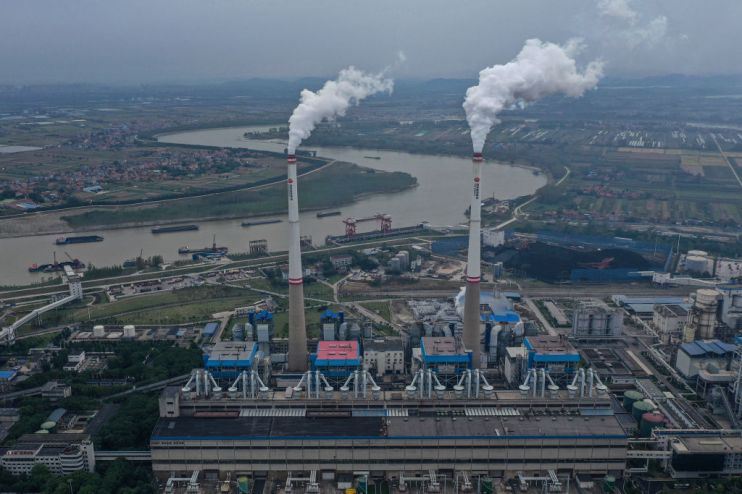Carbon capture patents rise for fifth year running as China aims to mitigate reliance on fossil fuels

Global patents registered for carbon capture and storage have risen 22 per cent, increasing for the fifth year running.
The number of patents registered has increased from 167 in 2019-20 to 203 in 2020-21, according to research by accountancy and business advisory firm BDO.
This compares to just 62 carbon capture and storage (CCS) patents five years ago.
The surge in registration has been driven by China, which was responsible for 81 per cent of global patents last year.
The country is the world’s largest emitter of carbon emissions and is responsible for over half of the world’s coal power generation.
By contrast, the US came a distant second place in the patent race with nine per cent, while the UK only accounted for two patents over the same period – just 1 per cent of the total.
Carbon capture a crucial tool in the race to net zero emissions
Carbon capture is the process of removing CO2 from gasses emitted by industrial processes and storing it.
It is particularly attractive to companies looking for innovative ways to reduce carbon emissions and monetise technologies amid global pressure to develop a greener global economy.
The gases are often stored depleted oil and gas reservoirs or coalbeds.
In some cases, the CO2 captured can also be re-utilised for the production of commercial products, taking it out of the carbon cycle.
The data shows the energy sector leads the way in registering carbon capture patents, with the industry recording 32 carbon capture patents in the last year – 16 per cent of the total.
The technology is highly attractive to oil and gas firms looking to minimise emissions, alongside cement and concrete plants, sewage and garbage treatment works, mining, agriculture, steel and construction.
Recent examples of innovative patents using carbon capture technology include patents to remove carbon from emissions related to cancer treatment, and also a method of capturing carbon emitted during the production of coke.
China leads way with patents after “phase down” coal pledge
Governments around the world are upping their commitment to carbon capture and storage.
After intense negotiations at the COP26 climate conference in Glasgow, China eventually agreed to “phase down” coal production, rather than “phase out”.
It is likely to rely heavily on carbon capture technology to reduce its emissions as part of its 30/60 targets – carbon peaking by 2030 and carbon neutrality by 2060.
China recently opened its first offshore carbon capture facility.
In 2020-21, 81 per cent of patents (164) were Chinese in origin – mostly from the country’s energy companies and universities.
Meanwhile, the US Senate has passed a bipartisan infrastructure bill in which includes $12bn of carbon capture provisions.
The UK government has also committed £1bn to carbon capture infrastructure in its 2020 budget.
It recently announced it has fast-tracked two carbon capture and storage schemes in the north-east and north-west of England, with the aim of having the technology up and running by the middle of the decade.
David Bevan, Corporate Finance Director at BDO argued that carbon capture should not be considered a replacement for the longer-term transition to renewable energy.
However, he did consider the patents crucial to maintaining commercial advantage and reducing overall emissions.
Bevan said: “Governments and corporations worldwide have woken up to the need for carbon mitigation technologies with net-zero dates fast-approaching around the world. Those who can patent the best technologies are likely to have a commercial edge on their rivals as we transition to a green economy.